Abstract
Studies were conducted to determine a physiological basis for competitive differences between Senecio vulgaris L. biotypes which are either resistant or susceptible to triazine herbicides. Net carbon fixation of intact leaves of mature plants was higher at all light intensities in the susceptible biotype than in the resistant biotype. Quantum yields measured under identical conditions for each biotype were 20% lower in the resistant than in the susceptible biotype. Oxygen evolution in continuous light measured in stroma-free chloroplasts was also higher at all light intensities in the susceptible biotype than in the resistant biotype. Oxygen evolution in response to flashing light was measured in stroma-free chloroplasts of both biotypes. The steady-state yield per flash of resistant chloroplasts was less than 20% that of susceptible chloroplasts. Susceptible chloroplasts displayed oscillations in oxygen yield per flash typically observed in normal chloroplasts, whereas the pattern of oscillations in resistant chloroplasts was noticeably damped. It is suggested that modification of the herbicide binding site which confers s-triazine resistance may also affect the oxidizing side of photosystem II, making photochemical electron transport much less efficient. This alteration has resulted in a lowered capacity for net carbon fixation and lower quantum yields in whole plants of the resistant type.
Full text
PDF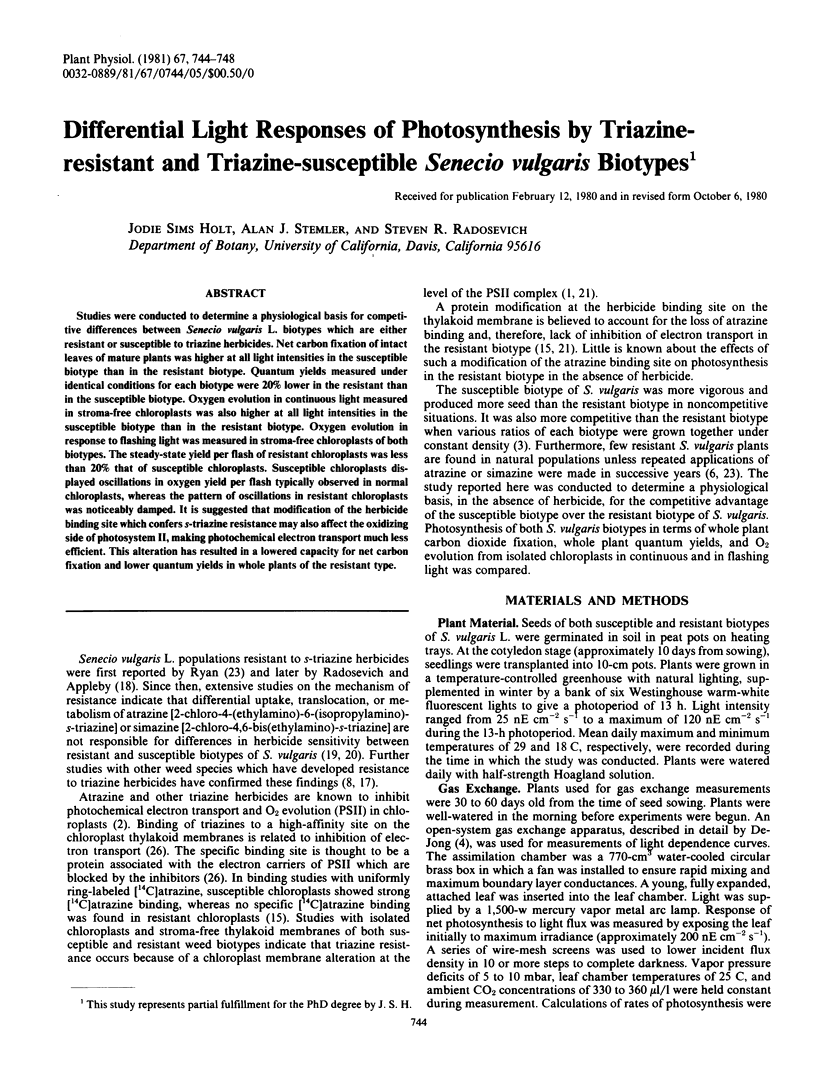
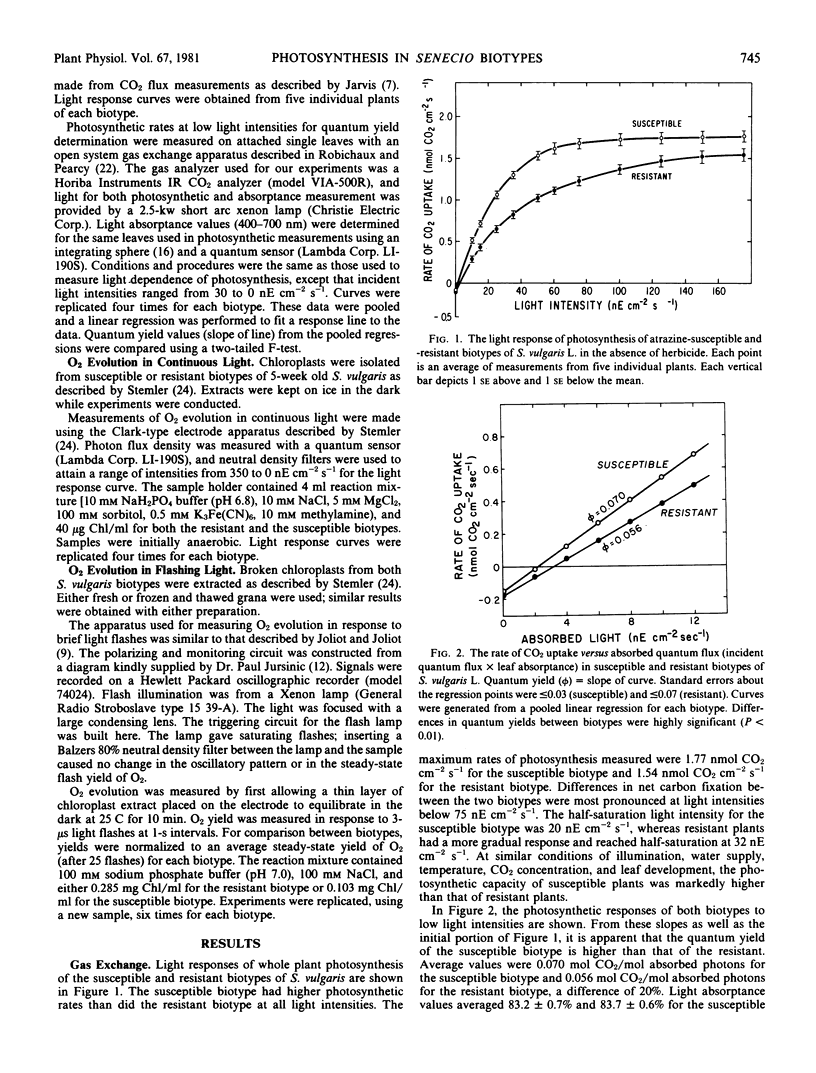
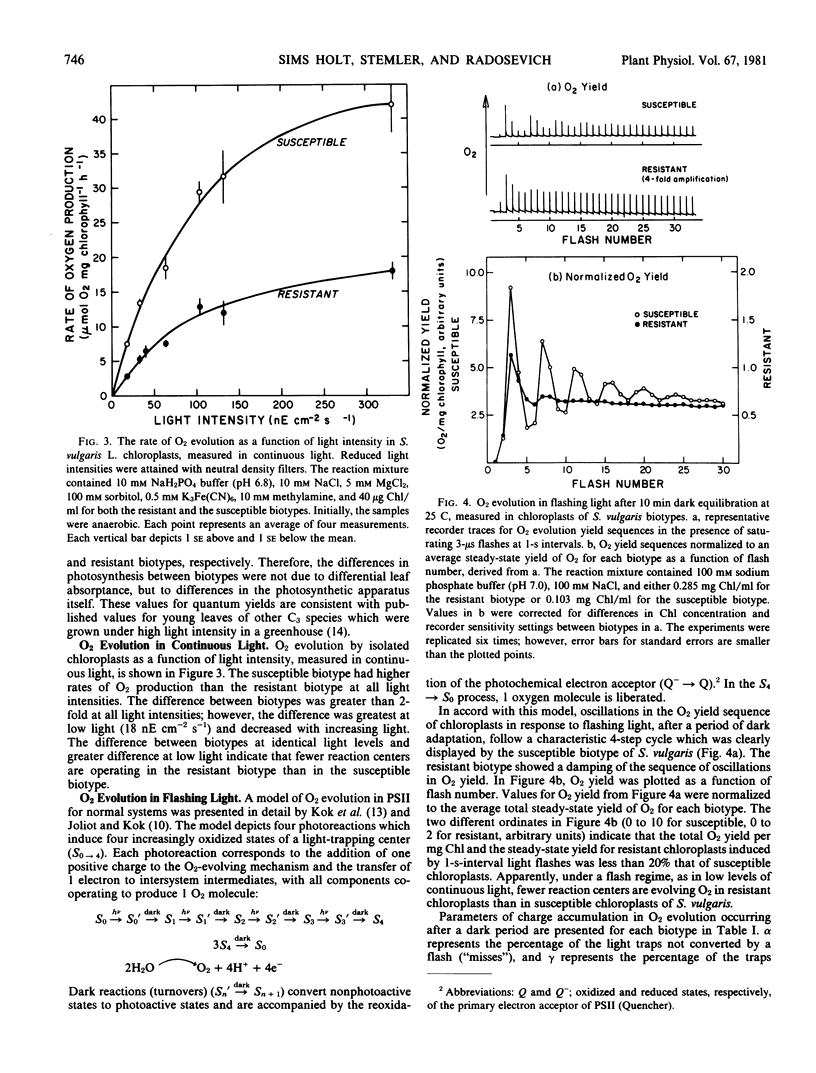
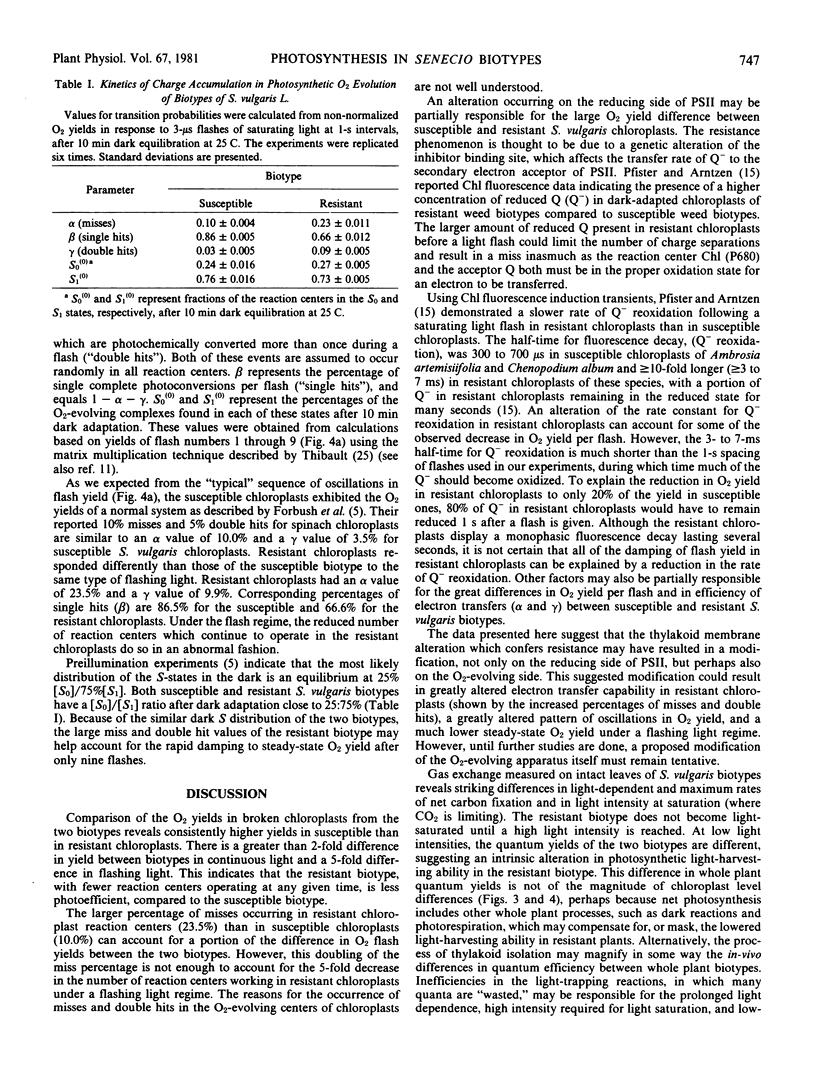
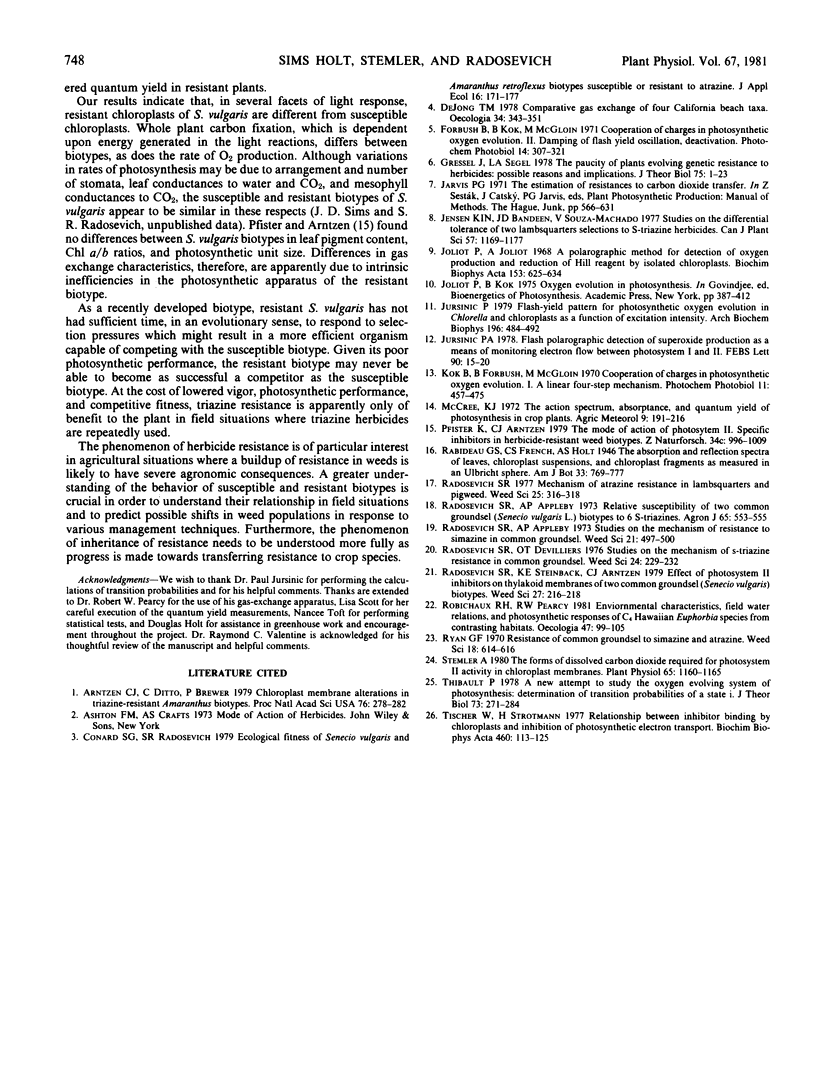
Selected References
These references are in PubMed. This may not be the complete list of references from this article.
- Andrade Z. A., Andrade S. G., Susin M. Pathological changes due to massive schistosomal infection in man (a case presentation). Rev Inst Med Trop Sao Paulo. 1974 May-Jun;16(3):171–177. [PubMed] [Google Scholar]
- Arntzen C. J., Ditto C. L., Brewer P. E. Chloroplast membrane alterations in triazine-resistant Amaranthus retroflexus biotypes. Proc Natl Acad Sci U S A. 1979 Jan;76(1):278–282. doi: 10.1073/pnas.76.1.278. [DOI] [PMC free article] [PubMed] [Google Scholar]
- Duerden M., Jones M. N. Amphipathicity and aggregation in polypeptide and protein systems. J Theor Biol. 1978 Nov 7;75(1):1–19. doi: 10.1016/0022-5193(78)90199-6. [DOI] [PubMed] [Google Scholar]
- Joliot P., Joliot A. A polarographic method for detection of oxygen production and reduction of hill reagent by isolated chloroplasts. Biochim Biophys Acta. 1968 Apr 2;153(3):625–634. doi: 10.1016/0005-2728(68)90190-4. [DOI] [PubMed] [Google Scholar]
- Jursinic P. Flash-yield pattern for photosynthetic oxygen evolution in Chlorella and chloroplasts as a function of excitation intensity. Arch Biochem Biophys. 1979 Sep;196(2):484–492. doi: 10.1016/0003-9861(79)90300-x. [DOI] [PubMed] [Google Scholar]
- Kok B., Forbush B., McGloin M. Cooperation of charges in photosynthetic O2 evolution-I. A linear four step mechanism. Photochem Photobiol. 1970 Jun;11(6):457–475. doi: 10.1111/j.1751-1097.1970.tb06017.x. [DOI] [PubMed] [Google Scholar]
- Stemler A. Forms of Dissolved Carbon Dioxide Required for Photosystem II Activity in Chloroplast Membranes. Plant Physiol. 1980 Jun;65(6):1160–1165. doi: 10.1104/pp.65.6.1160. [DOI] [PMC free article] [PubMed] [Google Scholar]
- Thibault P. A new attempt to study the oxygen evolving system of photosynthesis: determination of transition probabilities of a state i. J Theor Biol. 1978 Jul 20;73(2):271–284. doi: 10.1016/0022-5193(78)90190-x. [DOI] [PubMed] [Google Scholar]
- Tischer W., Strotmann H. Relationship between inhibitor binding by chloroplasts and inhibition of photosynthetic electron transport. Biochim Biophys Acta. 1977 Apr 11;460(1):113–125. doi: 10.1016/0005-2728(77)90157-8. [DOI] [PubMed] [Google Scholar]


